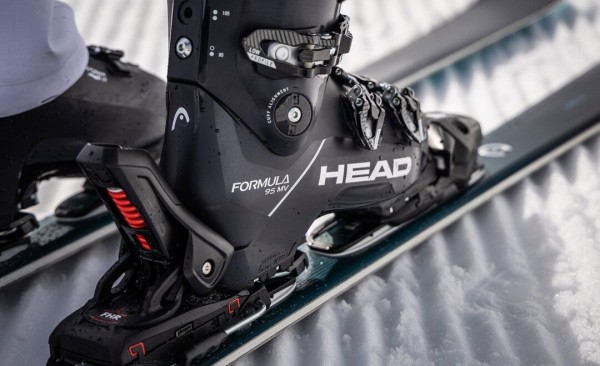Taking care of your ski boots during your skiing vacation
After a successful day on the slopes, it's important to rid your ski boots of any dirt or snow. Most accommodations provide a boot dryer, which is perfect for drying the liners. Failing to dry your ski boots after a day of skiing can lead to unpleasant odors in the liners, which may only be resolved by purchasing new liners. Ensure you position your ski boots with the toe end up on the boot dryer.
If your accommodation lacks a boot dryer or you prefer to dry the liners yourself, we recommend this small and effective dryer from Therm-IC.
Caring for your ski boots after the skiing vacation
After your vacation, remove the liner from the shell and let both parts dry completely. You can wipe the outer shell with a microfiber cloth. The outer shells are not breathable. That is why moisture from foot sweat accumulates. It should at least be wiped and dried after your vacation. The liner can simply be dried in a dry room.
Cleaning Your Ski Boots
Cleaning the outer shell
During a ski vacation, your ski boots encounter more than just snow. Dirt and gravel on parking lots or pathways are quite common. You can wipe the exterior of the ski boots with a damp cloth. For stubborn dirt, a mild cleaning solution can be used. Check the sole plates for damage or small stones that might have got stuck in them.
Cleaning the liner
Your boot's liner is its most precious part. Without a well-maintained liner, odors or cold feet are likely. Drying the liner during your ski vacation was mentioned earlier. After drying the liner post-vacation, you can stuff the toe area with newspaper or other paper to prevent your boots from moisture building up in that area.
Storage of ski boots during the summer
During the summer, it's advisable to store your ski boots in a dry, dark, and preferably cool place. This helps to preserve the durability of your ski boots. Using a ski boot bag is recommended for storage.
How long do ski boots last?
Depending on usage, ski boots typically last between four to eight years. Ski boot manufacturers recommend a maximum usage period of eight years. Beyond this timeframe, for a safety-critical product like ski boots, manufacturers cannot guarantee proper functionality of your boots, mainly consistend in plastics. Additionally, shell breakage after eight years is not uncommon.
It's also important to inspect your sole plates for wear and, if necessary, have them replaced with new ones from a skiing store. Sole plates are not only essential for walking in ski boots but also crucial for the correct release of the ski binding. You might consider converting your ski boots to GripWalk soles, which significantly enhance comfort while walking in ski boots.
Read more about GripWalk soles here.




